-
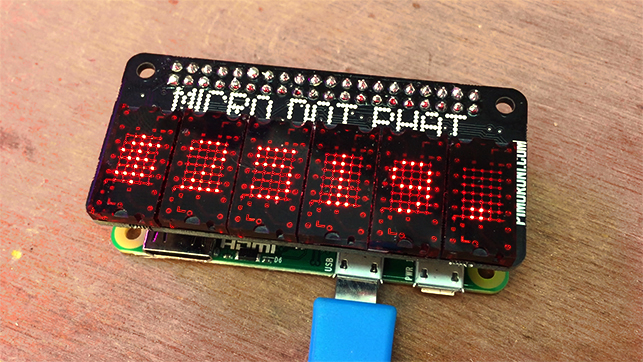 A Quick 5 minute build and possibly a prototype for a future project. I took the Pimoroni micro dot display, which is suitably retro looking, like an 80s/90s stock exchange. Although it is LED, it actually looks a bit like an old Vacuum fluorescent display! The code is a very simple Python script that uses Coinmarketcap API (I chose them because they pull all the coins together) which is simply just provided as JSON, the API allows you to request by currency so I just pulled the ones I wanted and fed the details into a single string that loops on the display.
A Quick 5 minute build and possibly a prototype for a future project. I took the Pimoroni micro dot display, which is suitably retro looking, like an 80s/90s stock exchange. Although it is LED, it actually looks a bit like an old Vacuum fluorescent display! The code is a very simple Python script that uses Coinmarketcap API (I chose them because they pull all the coins together) which is simply just provided as JSON, the API allows you to request by currency so I just pulled the ones I wanted and fed the details into a single string that loops on the display.
Read More
-
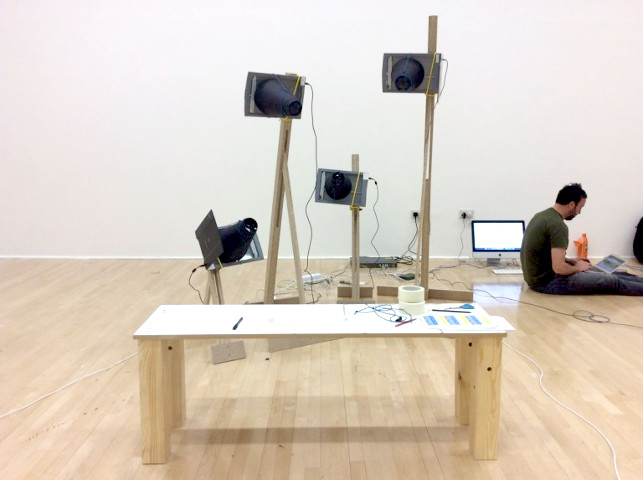 Yes its true, I now do more than synths so my posts have diversified a bit although some new synth stuff coming soon, watch this space! This is a project I did a few months ago for Foxall Studio concept was to get around 50 flatbed scanners scattered around an exhibition space scanning in unison. Then creating clustered mosaics of images from the results that were displayed in the space using projections and printers. My task on the project became how to connect and power all of these scanners. We ended up using Raspberry Pis because it offered us the low cost and flexibility to position the scanners anywhere. I was sent this image below when the scanners arrived!
Yes its true, I now do more than synths so my posts have diversified a bit although some new synth stuff coming soon, watch this space! This is a project I did a few months ago for Foxall Studio concept was to get around 50 flatbed scanners scattered around an exhibition space scanning in unison. Then creating clustered mosaics of images from the results that were displayed in the space using projections and printers. My task on the project became how to connect and power all of these scanners. We ended up using Raspberry Pis because it offered us the low cost and flexibility to position the scanners anywhere. I was sent this image below when the scanners arrived!
Read More
-
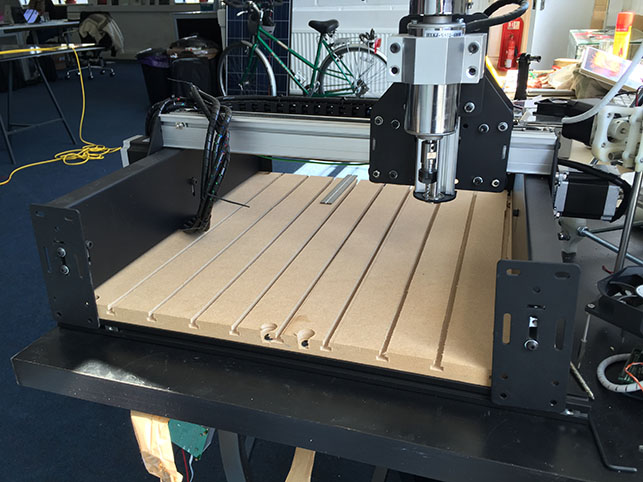 I have been using my Shapeoko on an off over the past few months and the most frustrating thing is clamping. Nothing is more annoying when you have perfectly aligned it and your clamp or screw moves and it all goes off! Best option is a surface that can be clamped to. I have seen other people try solutions like putting in nail nuts to the surface or just buying a pre-made aluminium clamp bed (£££). But I wasn’t to sure about it, especially if as I have found my mill losses grip on the bit and it plunges right down I didn’t want to collide with steel. I found a special router bit that lets you cut undercut grooves into wood so you can put bolt heads into it. Pictured above is it fitted to the Shapeoko and was quite easy to make (lots of dust though!)
I have been using my Shapeoko on an off over the past few months and the most frustrating thing is clamping. Nothing is more annoying when you have perfectly aligned it and your clamp or screw moves and it all goes off! Best option is a surface that can be clamped to. I have seen other people try solutions like putting in nail nuts to the surface or just buying a pre-made aluminium clamp bed (£££). But I wasn’t to sure about it, especially if as I have found my mill losses grip on the bit and it plunges right down I didn’t want to collide with steel. I found a special router bit that lets you cut undercut grooves into wood so you can put bolt heads into it. Pictured above is it fitted to the Shapeoko and was quite easy to make (lots of dust though!)
Read More
-
 A Quick 5 minute build and possibly a prototype for a future project. I took the Pimoroni micro dot display, which is suitably retro looking, like an 80s/90s stock exchange. Although it is LED, it actually looks a bit like an old Vacuum fluorescent display! The code is a very simple Python script that uses Coinmarketcap API (I chose them because they pull all the coins together) which is simply just provided as JSON, the API allows you to request by currency so I just pulled the ones I wanted and fed the details into a single string that loops on the display.
A Quick 5 minute build and possibly a prototype for a future project. I took the Pimoroni micro dot display, which is suitably retro looking, like an 80s/90s stock exchange. Although it is LED, it actually looks a bit like an old Vacuum fluorescent display! The code is a very simple Python script that uses Coinmarketcap API (I chose them because they pull all the coins together) which is simply just provided as JSON, the API allows you to request by currency so I just pulled the ones I wanted and fed the details into a single string that loops on the display. Yes its true, I now do more than synths so my posts have diversified a bit although some new synth stuff coming soon, watch this space! This is a project I did a few months ago for Foxall Studio concept was to get around 50 flatbed scanners scattered around an exhibition space scanning in unison. Then creating clustered mosaics of images from the results that were displayed in the space using projections and printers. My task on the project became how to connect and power all of these scanners. We ended up using Raspberry Pis because it offered us the low cost and flexibility to position the scanners anywhere. I was sent this image below when the scanners arrived!
Yes its true, I now do more than synths so my posts have diversified a bit although some new synth stuff coming soon, watch this space! This is a project I did a few months ago for Foxall Studio concept was to get around 50 flatbed scanners scattered around an exhibition space scanning in unison. Then creating clustered mosaics of images from the results that were displayed in the space using projections and printers. My task on the project became how to connect and power all of these scanners. We ended up using Raspberry Pis because it offered us the low cost and flexibility to position the scanners anywhere. I was sent this image below when the scanners arrived! I have been using my Shapeoko on an off over the past few months and the most frustrating thing is clamping. Nothing is more annoying when you have perfectly aligned it and your clamp or screw moves and it all goes off! Best option is a surface that can be clamped to. I have seen other people try solutions like putting in nail nuts to the surface or just buying a pre-made aluminium clamp bed (£££). But I wasn’t to sure about it, especially if as I have found my mill losses grip on the bit and it plunges right down I didn’t want to collide with steel. I found a special router bit that lets you cut undercut grooves into wood so you can put bolt heads into it. Pictured above is it fitted to the Shapeoko and was quite easy to make (lots of dust though!)
I have been using my Shapeoko on an off over the past few months and the most frustrating thing is clamping. Nothing is more annoying when you have perfectly aligned it and your clamp or screw moves and it all goes off! Best option is a surface that can be clamped to. I have seen other people try solutions like putting in nail nuts to the surface or just buying a pre-made aluminium clamp bed (£££). But I wasn’t to sure about it, especially if as I have found my mill losses grip on the bit and it plunges right down I didn’t want to collide with steel. I found a special router bit that lets you cut undercut grooves into wood so you can put bolt heads into it. Pictured above is it fitted to the Shapeoko and was quite easy to make (lots of dust though!) Here is a PCB I have designed, it was made in response to the release of the Raspberry Pi Zero. For a low cost it helps to break out the analogue outputs from the zero. The analogue ports it provides are stereo audio, composite and VGA. This is all on the same edge as the Zero’s existing connectors. This board is ideal if you want to utilize a computer monitor, especially if it has built in speakers like many ‘multimedia’ TFT screens that now cost very little second hand. Apart from the composite output it will also work on any Raspberry Pi that has the 40 pin GPIO header (Raspberry Pi A/B+ and the Raspberry Pi 2) I am fund raising to make a bunch of them on Kickstarter see here
Here is a PCB I have designed, it was made in response to the release of the Raspberry Pi Zero. For a low cost it helps to break out the analogue outputs from the zero. The analogue ports it provides are stereo audio, composite and VGA. This is all on the same edge as the Zero’s existing connectors. This board is ideal if you want to utilize a computer monitor, especially if it has built in speakers like many ‘multimedia’ TFT screens that now cost very little second hand. Apart from the composite output it will also work on any Raspberry Pi that has the 40 pin GPIO header (Raspberry Pi A/B+ and the Raspberry Pi 2) I am fund raising to make a bunch of them on Kickstarter see here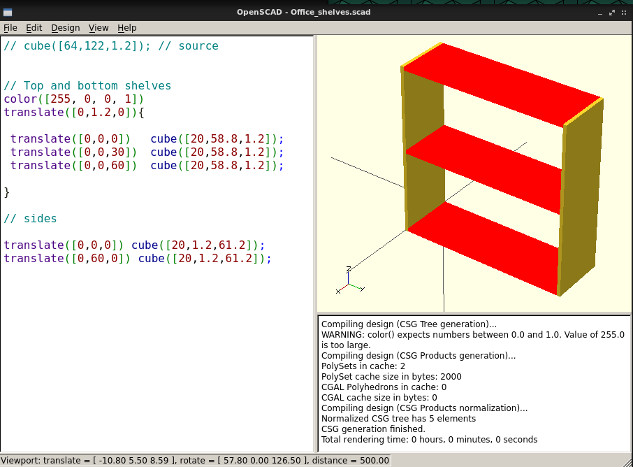 If you like to think in code this CAD program is great, especially if the design can be broken down into primitives. This is an example of a very basic shelf I designed but I have been using it for everything from designing mounts to hold PIR sensors to a shed that will become the new Clacktronics workshop!
If you like to think in code this CAD program is great, especially if the design can be broken down into primitives. This is an example of a very basic shelf I designed but I have been using it for everything from designing mounts to hold PIR sensors to a shed that will become the new Clacktronics workshop!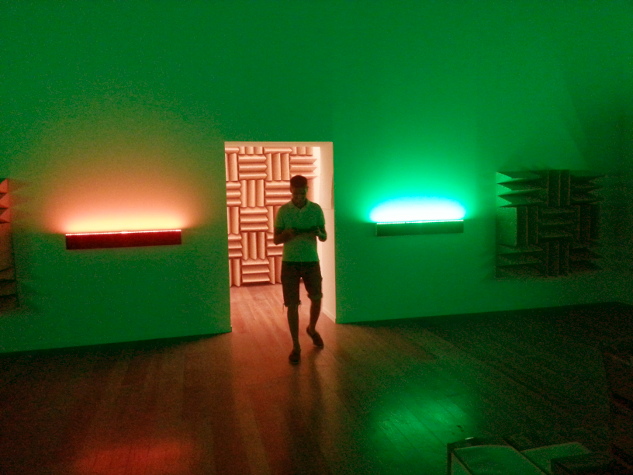 This is a story about what I currently do, I have moved a little bit away from synthesizers but still make audio electronics for artist Haroon Mirza and sometimes other artists. The approach to making artworks are different to designing audio devices, as usually components and circuits are one-off designs or modified items which are usually used against their original intention. The reason I decided to write about this was to document how the system works for this particular work as it is using new technologies that are getting easier to prototype with. I am really impressed with this new microcontroller implementation of Python programming language called Micro Python.
This is a story about what I currently do, I have moved a little bit away from synthesizers but still make audio electronics for artist Haroon Mirza and sometimes other artists. The approach to making artworks are different to designing audio devices, as usually components and circuits are one-off designs or modified items which are usually used against their original intention. The reason I decided to write about this was to document how the system works for this particular work as it is using new technologies that are getting easier to prototype with. I am really impressed with this new microcontroller implementation of Python programming language called Micro Python.